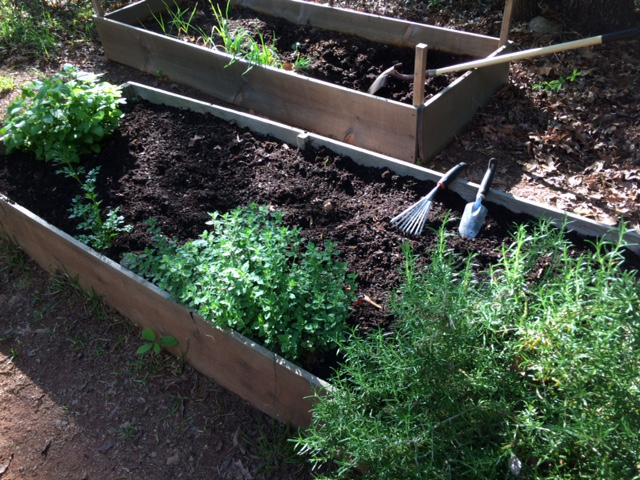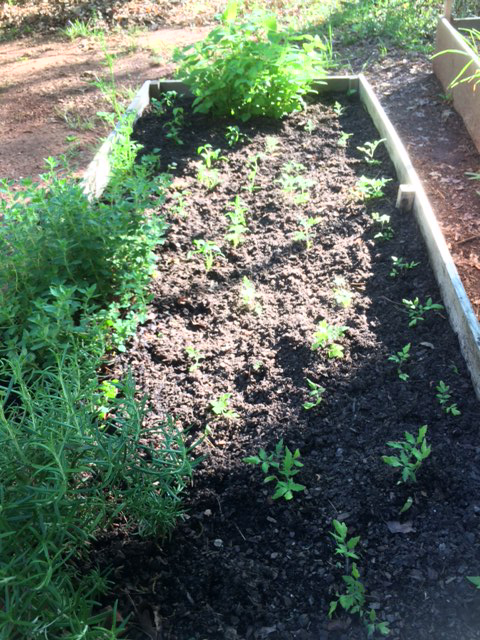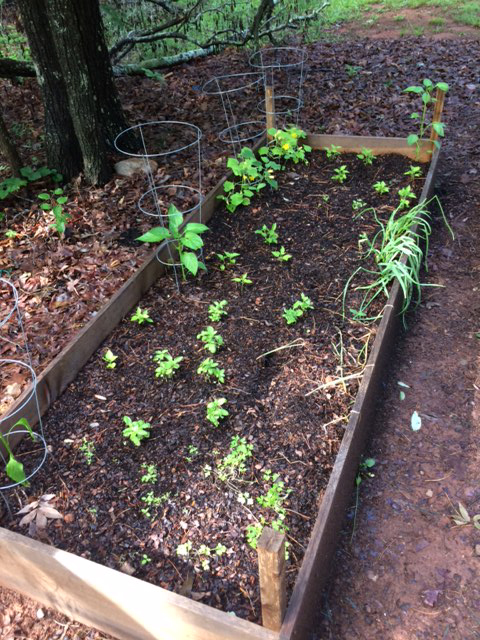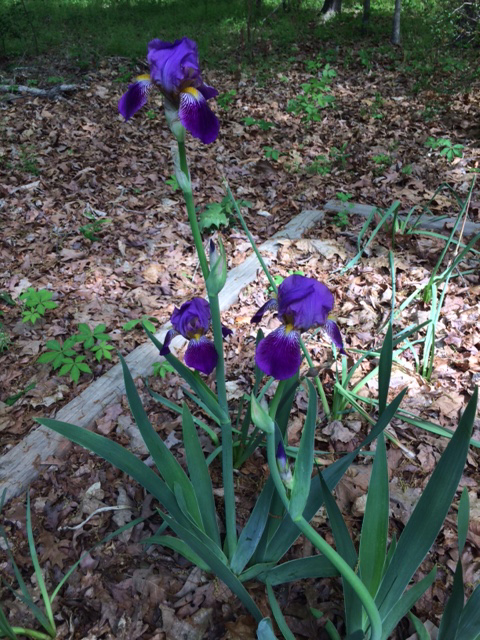I planted a multitude of seeds this year. I am amazed how many herbs and veggies fit in the two 3′ x 8′ raised, organic garden beds. We will see what survives & thrives in 2017.
Herbs grown from seed:
Parsley, Marjoram, Thyme, Lovage, Basil, Coriander/Cilantro, Catnip, Chamomile, Anise, Summer Savory, & Chives
Veggies:
Peppers-Jalapeno, Tabasco grown from seed. I bought a Poblano (which the deer immediately destroyed), a Green Bell, & an Orange Baby Bell pepper.
Tomatoes: Cherry, Yellow Pear, Early Girl-from seed
Cucumbers-Pickling & Bush Beans- from seed
I started the 1st round of seeds indoors in early March- a few weeks later than usual. Those seeds became the plants above- pic taken before planting in the raised beds in mid April!
April 20th– (a little later than I like) I transplanted the first round, after prepping the beds. I also added a second round of new seeds directly to the soil. The Rosemary, Oregano, Lemon Balm, Peppermint, and Parsley survived the winter.
I added a second round of transplants and seeds in early May. Directly sowed more cucumber, bush beans & more tomato seeds. I added my organic, homemade compost from the Earth Machine, mushroom compost, organic pine bark mulch, and native clay soil to both beds.
This year, I have an infestation of what we call tater or pill bugs, (but they have many names). So far, they’ve only munched my cucumber leaves a little. I will leave them alone, as they don’t seem to be doing much harm. They are very interesting creatures, notable for their ability to clean heavy metals from soil.

























































